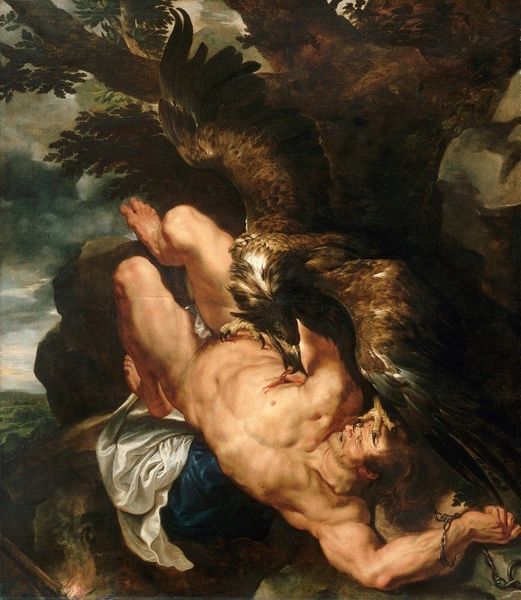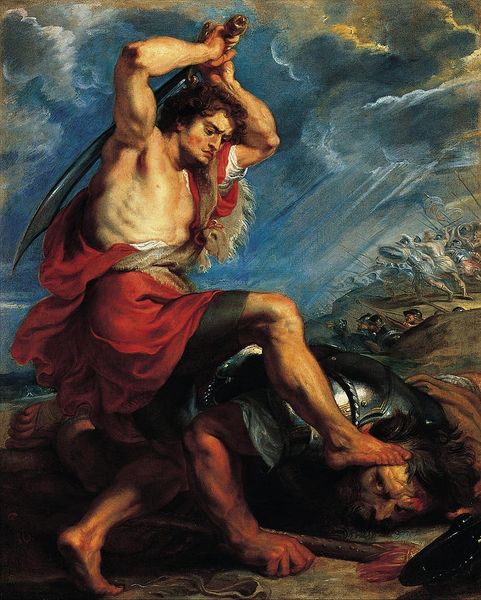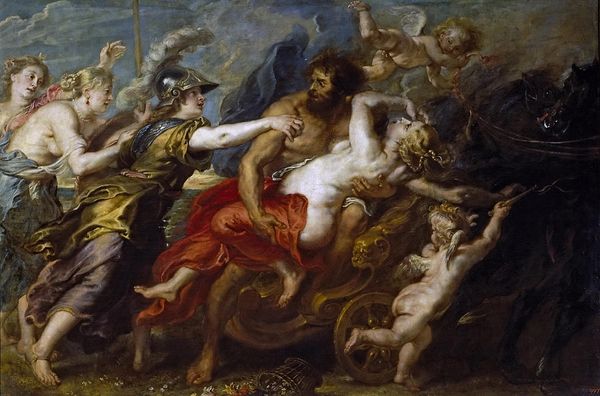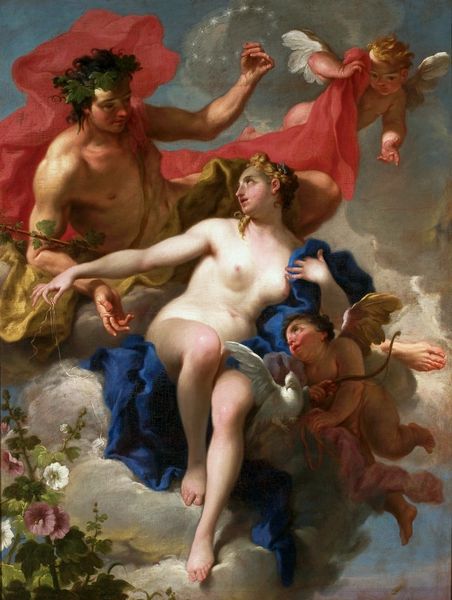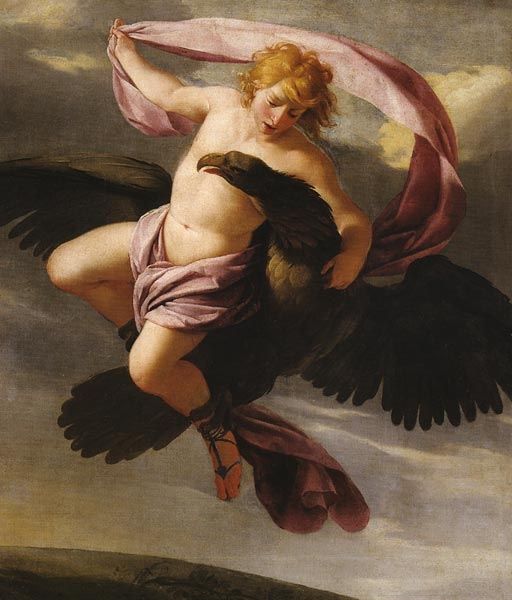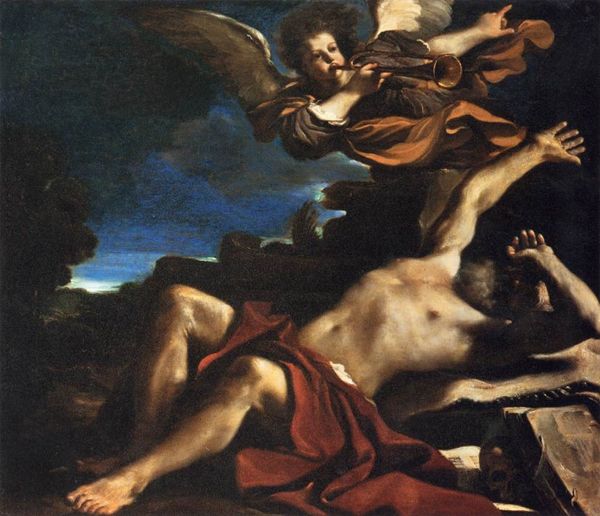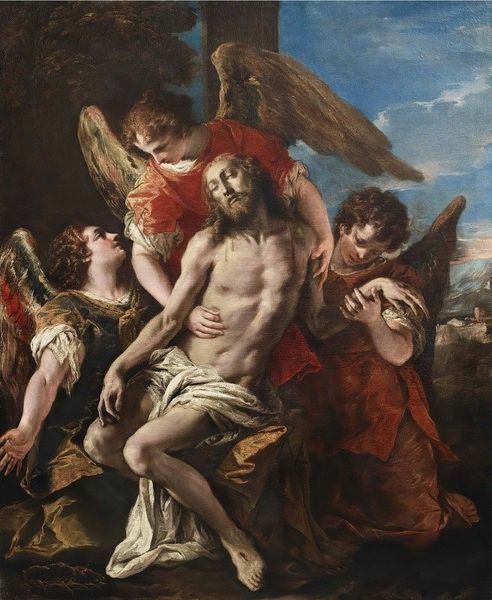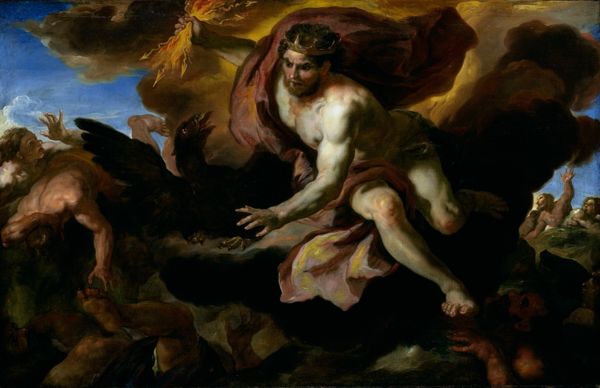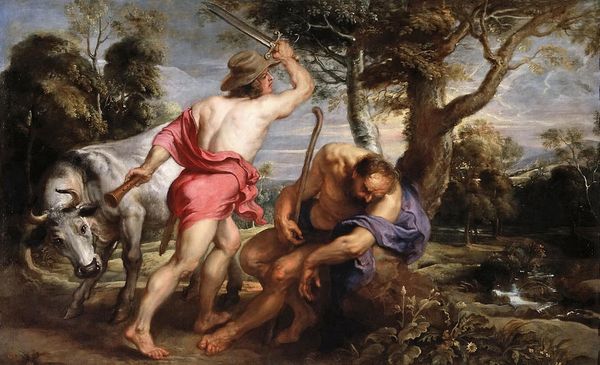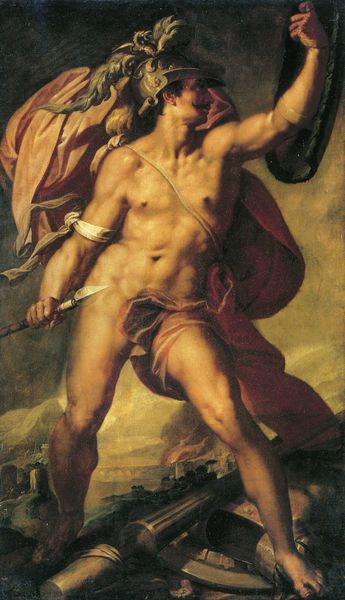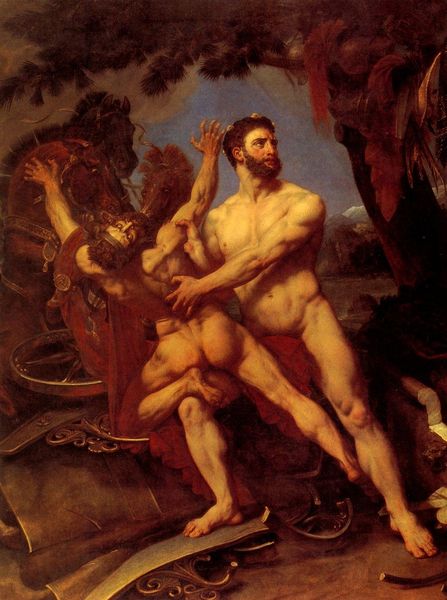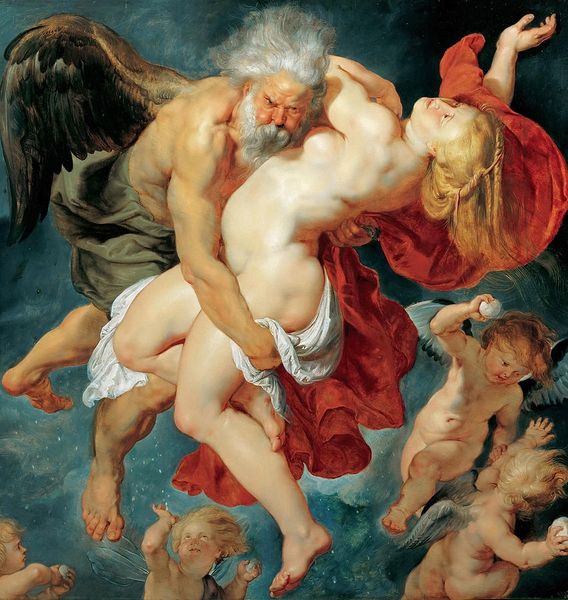
painting, oil-paint
#
allegory
#
baroque
#
painting
#
oil-paint
#
figuration
#
oil painting
#
mythology
#
painting painterly
#
history-painting
#
realism
Copyright: Public Domain: Artvee
Curator: This is Peter Paul Rubens's "Cupid Supplicating Jupiter," dating from around 1611 to 1615. Editor: My initial impression is one of immense power, softened somehow by that pleading figure. It's monumental, almost theatrical. The eagle’s feather work alone makes the case for oil paint as the finest substance. Curator: Indeed. It's a compelling snapshot into the artistic patronage of the Baroque era. Consider Rubens's role as both artist and diplomat. This painting, rich in classical allusions, likely served to enhance the prestige of his patrons and himself within influential social circles. Editor: Precisely. The opulent drapery isn’t simply aesthetic; it’s woven from social fabric itself. I am curious about Rubens's workshop. How many hands were involved in realizing a canvas like this? It reveals much about the social division of labor. Did artisans, perhaps with specialized expertise in depicting birds, get to sign their own individual bits here? Curator: Excellent point. While Rubens maintained a large studio, attributing specific passages to assistants is often difficult, though probable, without more documentation. Rubens certainly understood the value of a strong brand: He assured high quality output and timely delivery for powerful commissioners like royalty. Editor: So Rubens becomes not just the creator, but a manager of artistic labor. I wonder, does knowing it isn't purely "Rubens's hand" diminish its aura, or does it enrich our appreciation of the complex labor and skill that resulted in a marvel? Curator: The aura persists, but it does shift to encompass a larger network. Also notice that the eagle isn’t only an impressive technical display. Jupiter’s emblem here connects his power with natural order—an element intended for contemporary viewers aware of how royal authority tied to divine right. Editor: A visual argument for social order! So this seemingly 'timeless' mythological scene is thoroughly embedded in the politics and production of its own time. That eagle and its gilded talons speaks loudly. Curator: Precisely. Examining such artwork shows how art has acted as a shaper and reflector of historical and social norms. Editor: And how closely those norms tie to the materiality of creation and, well, exploitation of laborers. It's a fascinating intersection.
Comments
No comments
Be the first to comment and join the conversation on the ultimate creative platform.
